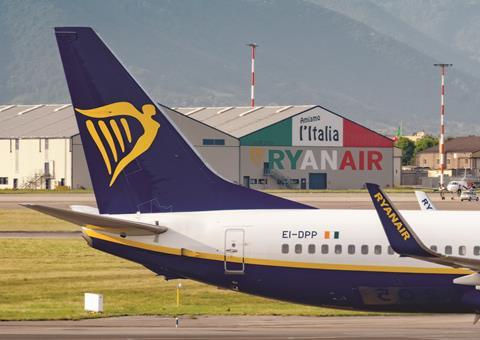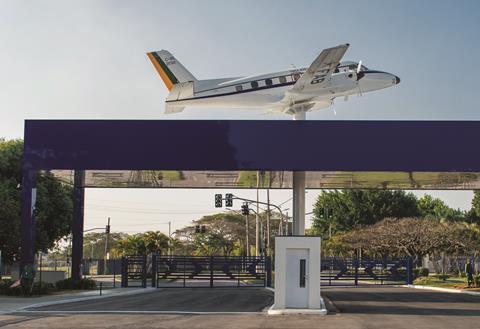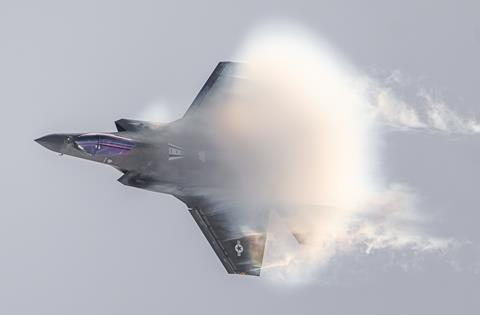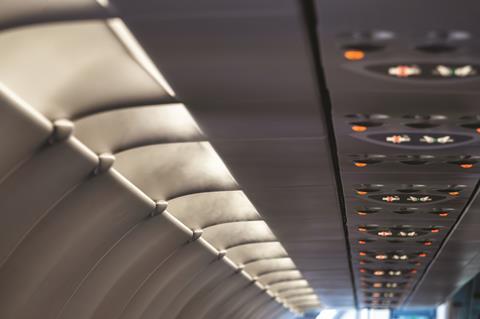The lighter side of Flight International.
Flying the flag
A crop of stories have emerged about Ryanair’s supposedly blundering by featuring on its aircraft not the Irish tricolour, but the flag of Cote d’Ivoire.
This sort of nonsense turns up on social media or in the papers now and again, despite the best efforts of airlines, aircraft manufacturers and vexillologists to point out that it’s all codswallop.
Identifier flags on aircraft fuselages are typically painted with reference to the nose as the hoist – that’s the bit of the flag closest to the flagpole – because a real flag would naturally align nose-to-tail in the airflow experienced during flight.

Since flags are conventionally pictured with the hoist on the left, this means the flag depicted on the left side of the fuselage looks more familiar than the ‘reversed’ one on the right side, especially if the reversal makes the flag of one country, like Ireland, look like the flag of another, like Cote d’Ivoire.
It’s a bit like the illusion in which an apparently-serious aviation story in the media, when looked at differently, actually turns out to be clickbait.
Birthday Bandeirante
To celebrate its 55th anniversary, Embraer has unveiled a new entrance to its main industrial complex in Sao Jose dos Campos, featuring an example of the turboprop that established its reputation in the 1970s.
The EMB-110 Bandeirante – which the Brazilian airframer describes as a “historic symbol of the company” – is suspended 10m over the gate.

“The new portal represents the take-off of a dream that became a reality, thanks to the efforts of a group of visionaries who believed that it was possible for Brazil to build its own aircraft,” says Luis Carlos Marinho, Embraer’s chief operating officer.
The factory was renamed in 2021 after Ozires Silva, the engineer and former air force officer who led the original team that set up Embraer in 1969. The facility produced the Bandeirante, as well as the Xavante, Ipanema, Xingu, Brasilia, Tucano, AMX and the ERJ-145 family. Today, it supports the E-Jet programme.
Stealth warning
Did the former President reveal the existence of a secret fighter jet? In a recent stump speech, talking up the potency of US military hardware, Donald Trump said: “We have F-16s, F-35s, F-32s…”
Despite the fact that he owns a Boeing 757, Trump would struggle to qualify as a Total Aviation Person, referring several times during his presidency to the “invisible” Lockheed Martin F-35, leading some to suspect he believed the stealth fighter came with a Star Trek-style cloaking device.

However, to be fair to him, the Donald usually speaks without notes and was probably getting mixed up with Lockheed’s other stealth type, the F-22 Raptor.
Smoke signal
Just a mere – checks notes – 24 years after banning smoking on all scheduled flights, the US Federal Aviation Administration has finally decided that rules requiring a switch to turn off ‘No smoking’ signs are probably redundant.
The FAA imposed the ban in June 2000, in response to a Congressional decision, and practically all commercial flights subsequently prohibited smoking.

While the FAA says illuminated ‘No smoking’ signs provide a “continuous reminder” to passengers of the ban, it has retained a regulation mandating fitting of switches to turn them off if necessary.
Which, of course, is never.
From yuckspeak to tales of yore, send your offcuts to murdo.morrison@flightglobal.com


























